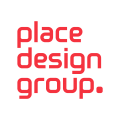Sport is synonymous with the Australian culture and psyche. And with the increased focus on public space, as a consequence of 2020’s challenges that continue today, along has come the explosive development of our local sporting precincts. We’ve seen the role of these precincts shift to much more than just a place to play sport, but to be critical facilities for the broader community to use at their leisure. These spaces are now more than ever, enabling meaningful connections through various social interactions, both on and off the field.
With this in mind, we wanted to explore how sporting AND RECREATIONAL precincts are transforming the way we use them, and shifting our thinking in terms of how we design and create a place that has the balance right. We spoke with three professionals in this field, to understand how our local precincts are shifting.

NICK ISON
Director
Place Design Group

FLEUR REES
Senior Landscape Architect
Ku-ring-gai Council

JARROD HILL
Director
SportEng
What are the key challenges with Community sports & rec precincts in built up suburban locations?
In any community there is a large percentage of people that don’t play sport. In a world where we are continuing to evolve and develop more inclusive measures, it is now more important than ever to find the balance between passive and active community uses with formal sports uses. The challenge is, how do you cater for everyone in a space which is predominantly dictated by sporting codes, whilst ensuring a 7 day a week, night and day multi-faceted offering. Many of our traditional sporting precincts are large, exposed open spaces which only provide for singular uses… we need to consider how to create lively diverse environments which reflect the vital role health and fitness (in an active or passive capacity) play in today’s lifestyles.
—
NICK ISON
Parking is one of the predominant issues raised in relation to sporting venues, with users noting that there is often insufficient allocation. There is also a dynamic between active versus passive recreation, and the sense of ownership of what is a shared space. There can be a sense among residents who utilise the space that the clubs who have the residency have entitlement over the space, and dominate it. Residents feel that the space is as much theirs as it is the clubs, and if they are using the space passively that they are ‘unwelcome’.
—
FLEUR REES
Outside the obvious, noise, traffic and light spill (at night) are key challenges in maintaining a playable surface all year round. Urban densification is resulting in higher intensity of use on our fields of play.
Field of play built years ago, were not designed to accommodate the increased usage which lead to the surface not being Fit for Use. New or redeveloped fields need to ensure that they are adequately designed to cater for the increase usage.
—
JARROD HILL
How do you manage the expectations of the community who play sport vs those that don’t when delivering a targeted sports & rec precinct?
Consideration of the catchment demographics and needs is so important. We are currently working with a community where approximately 10% play a sport and the remaining 90% don’t. The management challenges in this area are how do we cater for the 90%? Particularly when this sports precinct is right in the middle of a dense residential area. From a community’s expectation, they want to have a visually appealing parkland, that has great amenity, shelter, with a variety of spaces to enable a variety of uses – sports related or other. Close collaboration with community, local Council, sports and community groups is critical to understand all needs to ensure we can design and deliver spaces for that particular community, which in turn will provide spaces for a diverse mix of individuals and formal and informal groups. Now more than ever our aim is to blend the local community parkland with the local community sports precinct, to offer a ‘hybrid’ open space.
—
NICK ISON
Community consultation and engagement are key tools used to develop plans for sporting precincts – making sure that everyone is involved in the process. Having an understanding of all the user groups builds knowledge about the needs and enables the delivery of solutions that can best serve the differing objectives of the site. Ensuring that there is an equality of access is important and finding a balance between passive facilities such as walking tracks, fitness equipment and access to amenities and those specifically used by the clubs (fields and clubrooms).
Each site has its own constraints, topographically and financially, so it is important to be realistic about what can be achieved in a specific location and not commit to unachievable goals or promote unrealistic expectations.
—
FLUER REES
The key to designing a new facility is to make it something for everyone. There is a move away from facilities that are just designed for formalised sports. Informal fields of play elements such as Multi-Use Game Areas, half courts, etc. are becoming more common accomplices to formal sporting field elements to provide the community options for use of the facility.
—
JARROD HILL
How important is it to engage with sporting and recreation groups to develop programming understanding before the design of a precinct?
Engaging with not only the traditional formal sporting codes, but also community groups and wider community is critical. Formal sporting groups are working harder than ever to establish more locations to play games and establish new clubs. It is about engaging with them to understand their needs and also encouraging them to partner with informal sports and community groups to understand what others also require. This enables a more collaborative approach to not only the design process, but also the on-ground delivery and use of the precinct.
—
NICK ISON
In the redevelopment of an existing precinct, it is critically important to engage with the sporting and recreation groups, as they have the best understanding of the site and its capacity. The clubs often have decades of involvement with the site, and are familiar with how the site fluctuates over the seasons given variable conditions. They are often invested in the location and want to see the best possible outcomes. Sporting groups are generally more organised and often have funding for projects, so this needs to be balanced with other user’s input.
—
FLUER REES
It is not a case of build it and they come. If you build something the community doesn’t want or need then there was no need for the project. Engaging with local groups and understanding the demographic of a community will help the designer to understand the community needs.
—
JARROD HILL
With the increased desire for contactless technology and social distancing options in public spaces, what considerations are at play when creating a concept for a new/redeveloped complex?
Wifi and smart technologies were already being considered as part of the design process pre-2020. Post 2020 these are a must have. Public spaces are now classrooms, workstations, as well as places to meet, socialise and participate in formal and informal sporting activities. The technology and equipment we are including need to enable community to use the space in different ways. They also need to enable greater contactless and efficient maintenance – i.e. the ‘smart bin’ which compacts automatically and notifies Council when it is full. How to implement and service these technologies in a way that enables adaptability in the future is critical to the design process.
—
NICK ISON
Being able to provide generous spaces with ease of access, and flexibility to adapt spaces are important. A constrained site where people gather, but have no room to navigate around points of interest provides a challenge. Finding the balance between providing fit for purpose amenities and also enough supporting infrastructure for both sports users and casual recreation users is important. User comfort in terms of shelter and seating provision is always a key consideration.
—
FLUER REES
This is a tough one, as sports by nature, bring people together. Whether to play or to spectate, and in most sports social distancing is very difficult to achieve. However, off the field, we need to look at ways to achieve this with the sudden changes in restrictions that can hit a state or a suburb within a days’ notice.
One key consideration is looking at making facilities more permeable and to have multiple entry and exit points instead of a single access point.

